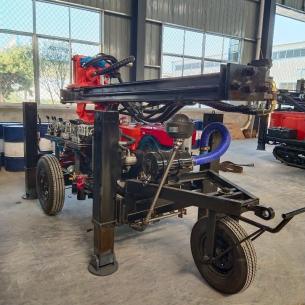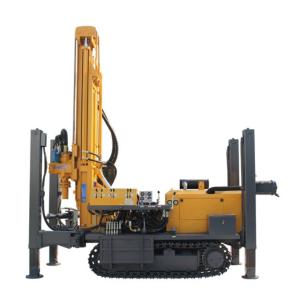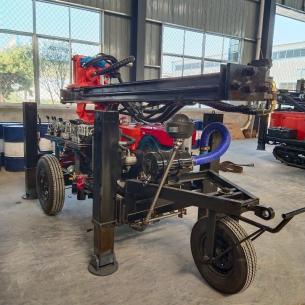How Can You Tell When You Hit Water When Drilling A Well?
For users who rely on water wells, it is crucial to accurately determine whether the aquifer has been successfully encountered during the drilling process. This is not only related to drilling efficiency, but also directly affects the water output and water quality of the well.
1. Direct observation signs during drilling
Increased wetness:The drill cuttings (rock fragments carried by mud) returning from the wellhead will become significantly wetter, and even water droplets can be seen. This is one of the most intuitive signals of hitting an aquifer.
Lithology changes: After the drill bit passes through a dense impermeable layer (such as clay layer, bedrock) and enters an aquifer (such as a sand layer, gravel layer, bedrock with developed fractures), the composition of the returned cuttings will change significantly. For example, from sticky clay to granular sand or gravel.
Color changes:The color of the cuttings in the aquifer may become darker or change due to different water or mineral compositions.Changes in mud properties:
Sudden drop in mud level: When the drill bit enters the aquifer, the pressure in the well may be lower than the water pressure in the aquifer, causing the mud in the well to be quickly sucked into the formation and the mud pool level to drop significantly. This usually means that a water-rich aquifer has been encountered.
Unexplained increase in mud volume: If the water pressure in the aquifer is higher than the pressure of the mud column in the well, groundwater will flow into the well, causing the mud pool level to rise and the mud to be diluted and thinned.
Changes in mud viscosity and density: The influx of groundwater will dilute the mud, reducing its viscosity and density.
2. Water level monitoring and instrument-assisted judgment
The water level in the well rises significantly:After stopping drilling and staying still for a period of time, lower a measuring rope or electronic water level gauge into the well to measure the water level depth.
If an aquifer is encountered, the water level in the well will usually rise rapidly to a relatively stable position, which roughly reflects the static water level (water pressure surface) of the aquifer. This is strong evidence that water has been hit.
Professional hydrological logging (more accurate and reliable):Hydrological logging can be performed after the expected depth is reached or suspicious signs are observed.
Resistivity logging: The conductivity of water is usually much higher than that of dry rock or oil and gas. Low resistivity abnormal areas often indicate aquifers.
Natural potential logging: It can help identify permeable formations (such as sandstone), which are more likely to contain water.
Neutron logging/gamma-gamma logging: It measures the porosity and density of the formation. High porosity areas are more likely to store water.
Flow logging: It is carried out when washing the well or pumping water. It can directly detect the water flow conditions at different depths in the well and accurately locate the water-producing layer.
3. Final verification after drillingWell washing after casing and gravel filling:
After drilling to the designed depth and lowering the filter pipe (flower pipe) and casing, and filling gravel around the filter pipe, the well is thoroughly washed.
The well washing process removes drilling fluid and fine particles and dredges the aquifer channel. Successfully washing out a large amount of clean water is a clear signal that water has been hit.
Pumping test (the most authoritative verification):Use a water pump to continuously pump water from the well.
Stable water level drop: During the pumping process, the water level in the well can remain relatively stable after dropping to a certain depth (dynamic water level is stable).
Preliminary judgment of water quality: The pumped water should be clear, without severe turbidity or odor (subsequent strict water quality testing is still required). Continuous and stable pumping is the "gold standard" for confirming that a usable water source has been successfully hit.
In Conclusion
Planning to drill a well for water? It is important to choose an experienced and professionally equipped drilling team! We specialize in providing efficient and reliable drilling solutions and equipment to help you accurately locate groundwater sources. Consult now to get a tailor-made water well solution!



